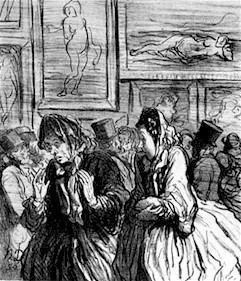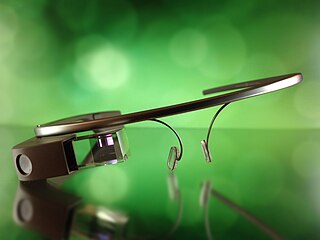Light show may refer to:
- Drone display
- Laser lighting display
- Liquid light show, light projected through colored oil
- Projection mapping, projecting a light display onto a building or other surface
- Christmas lights
- Meteor shower
Light show may refer to:

A light pen is a computer input device in the form of a light-sensitive wand used in conjunction with a computer's cathode-ray tube (CRT) display.

A planetarium is a theatre built primarily for presenting educational and entertaining shows about astronomy and the night sky, or for training in celestial navigation.

Augmented reality (AR) is an interactive experience of a real-world environment where the objects that reside in the real world are enhanced by computer-generated perceptual information, sometimes across multiple sensory modalities, including visual, auditory, haptic, somatosensory and olfactory. AR can be defined as a system that incorporates three basic features: a combination of real and virtual worlds, real-time interaction, and accurate 3D registration of virtual and real objects. The overlaid sensory information can be constructive, or destructive. This experience is seamlessly interwoven with the physical world such that it is perceived as an immersive aspect of the real environment. In this way, augmented reality alters one's ongoing perception of a real-world environment, whereas virtual reality completely replaces the user's real-world environment with a simulated one. Augmented reality is related to two largely synonymous terms: mixed reality and computer-mediated reality.

An organic light-emitting diode, also known as organic electroluminescentdiode, is a light-emitting diode (LED) in which the emissive electroluminescent layer is a film of organic compound that emits light in response to an electric current. This organic layer is situated between two electrodes; typically, at least one of these electrodes is transparent. OLEDs are used to create digital displays in devices such as television screens, computer monitors, and portable systems such as smartphones and handheld game consoles. A major area of research is the development of white OLED devices for use in solid-state lighting applications.

A laser lighting display or laser light show involves the use of laser light to entertain an audience. A laser light show may consist only of projected laser beams set to music, or may accompany another form of entertainment, typically musical performances.
Display may refer to:

A head-up display, also known as a HUD, is any transparent display that presents data without requiring users to look away from their usual viewpoints. The origin of the name stems from a pilot being able to view information with the head positioned "up" and looking forward, instead of angled down looking at lower instruments. A HUD also has the advantage that the pilot's eyes do not need to refocus to view the outside after looking at the optically nearer instruments.
A stereo display is a display device capable of conveying depth perception to the viewer by means of stereopsis for binocular vision.

A backlight is a form of illumination used in liquid crystal displays (LCDs). As LCDs do not produce light by themselves—unlike, for example, cathode ray tube (CRT) displays—they need illumination to produce a visible image. Backlights illuminate the LCD from the side or back of the display panel, unlike frontlights, which are placed in front of the LCD. Backlights are used in small displays to increase readability in low light conditions such as in wristwatches, and are used in smart phones, computer displays and LCD televisions to produce light in a manner similar to a CRT display. A review of some early backlighting schemes for LCDs is given in a report Engineering and Technology History by Peter J. Wild.

An art exhibition is traditionally the space in which art objects meet an audience. The exhibit is universally understood to be for some temporary period unless, as is rarely true, it is stated to be a "permanent exhibition". In American English, they may be called "exhibit", "exposition" or "show". In UK English, they are always called "exhibitions" or "shows", and an individual item in the show is an "exhibit".

The Fremont Street Experience (FSE) is a pedestrian mall and attraction in downtown Las Vegas, Nevada. The FSE occupies the westernmost five blocks of Fremont Street, including the area known for years as "Glitter Gulch," and portions of some other adjacent streets.

An interactive whiteboard (IWB), also known as interactive board or smart board, is a large interactive display board in the form factor of a whiteboard. It can either be a standalone touchscreen computer used independently to perform tasks and operations, or a connectable apparatus used as a touchpad to control computers from a projector. They are used in a variety of settings, including classrooms at all levels of education, in corporate board rooms and work groups, in training rooms for professional sports coaching, in broadcasting studios, and others.
Plot or Plotting may refer to:
Thunderbolt is the brand name of a hardware interface for the connection of external peripherals to a computer. It has been developed by Intel, in collaboration with Apple. It was initially marketed under the name Light Peak, and first sold as part of an end-user product on 24 February 2011.
The UCSC Genome Browser is an on-line, and downloadable, genome browser hosted by the University of California, Santa Cruz (UCSC). It is an interactive website offering access to genome sequence data from a variety of vertebrate and invertebrate species and major model organisms, integrated with a large collection of aligned annotations. The Browser is a graphical viewer optimized to support fast interactive performance and is an open-source, web-based tool suite built on top of a MySQL database for rapid visualization, examination, and querying of the data at many levels. The Genome Browser Database, browsing tools, downloadable data files, and documentation can all be found on the UCSC Genome Bioinformatics website.

LightDM is a free and open-source X display manager that aims to be lightweight, fast, extensible and multi-desktop. It can use various front-ends to draw User Interface, also called Greeters. It also supports Wayland.

Google Glass, or simply Glass, is a brand of smart glasses—an optical head-mounted display designed in the shape of a pair of glasses. It was developed by X with the mission of producing a ubiquitous computer. Google Glass displays information in a smartphone-like, hands-free format. Wearers communicate with the Internet via natural language voice commands.
A see-through display or transparent display is an electronic display that allows the user to see what is shown on the screen while still being able to see through it. The main applications of this type of display are in head-up displays, augmented reality systems, digital signage, and general large-scale spatial light modulation. They should be distinguished from image-combination systems which achieve visually similar effects by optically combining multiple images in the field of view. Transparent displays embed the active matrix of the display in the field of view, which generally allows them to be more compact than combination-based systems.

VVV-WIT-07 is a unique variable star which presents a sequence of recurrent dimmings with a possible deep eclipse in July 2012. The star, located in the Scorpius constellation about 23,000 ly (7,100 pc) away, is not a binary star, which would eliminate such a system from explaining the various observed dimmings.
Project Starline is an experimental video communication method currently in development by Google that allows the user to see a 3D model of the person they are communicating with. Google announced the product at its 2021 I/O developer conference, saying that it will allow users to "talk naturally, gesture and make eye contact" by utilizing machine learning, spatial audio, computer vision and real-time compression to create the 3D effect without the user wearing typical virtual reality goggles. The goal is to make the user feel as if they are in the same room with the other user.